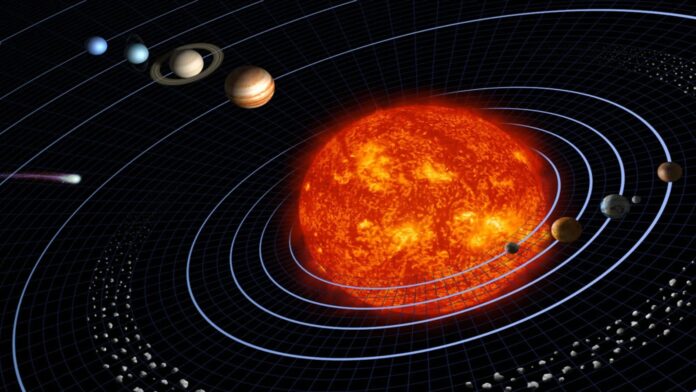"Tiny Meteorite Challenges Our Understanding of Solar System Origins!"
Tiny Meteorite Challenges Long-Held Beliefs About Solar System Formation
A recent discovery involving a small meteorite, known as Northwest Africa 12264, is prompting scientists to rethink the timeline of planetary formation in our solar system. This 50-gram (1.8 ounces) piece of space rock, believed to have originated from the outer solar system, suggests that rocky planets like Earth and icy bodies formed concurrently, rather than in a sequential manner as previously thought.
New Insights from Northwest Africa 12264
The meteorite was acquired from a dealer in Morocco in 2018 and has since been the subject of extensive analysis. Researchers focused on its chemical composition, particularly the ratios of chromium and oxygen isotopes, which indicate its formation in the colder regions of the solar system. Utilizing precise isotopic dating techniques, scientists determined that the meteorite formed approximately 4.564 billion years ago, just two to three million years after the solar system’s earliest solid materials began to coalesce.
Traditionally, it was believed that the inner rocky planets—Mercury, Venus, Earth, and Mars—formed first, around 4.566 billion years ago. In contrast, gas giants and icy bodies in the outer solar system were thought to have formed later, around 4.563 billion years ago, due to the lower temperatures and the presence of more water and ice, which would delay internal heating and core development.
Implications for Planetary Formation Theories
The findings from Northwest Africa 12264 challenge the long-standing notion that planets closer to the Sun formed before those in the outer solar system. The evidence suggests that the formation of rocky planets beyond Jupiter occurred at a similar pace to their inner counterparts. This revelation could significantly alter our understanding of planetary formation not only within our solar system but also in exoplanetary systems throughout the universe.
The study, published on July 4 in the journal Communications Earth & Environment, highlights that early formation was previously thought to be exclusive to bodies from the inner solar system. The implications of this research extend beyond mere timelines; they could reshape our understanding of the processes that govern planet formation.
The Process of Planetary Formation
Planets form within rotating disks of gas and dust surrounding young stars. In these environments, particles collide and stick together through a process known as accretion. As these developing rocky planets heat up, they begin to differentiate, forming distinct internal layers: the core, mantle, and crust. The new findings suggest that this process may have occurred simultaneously across different regions of the solar system, rather than in a staggered fashion.
Future Research Directions
The implications of this research are profound, prompting scientists to reconsider existing models of planetary formation. Future studies will likely focus on analyzing additional meteorites and celestial bodies to further understand the conditions and timelines of planetary development across the universe.
As researchers continue to unravel the complexities of our solar system’s history, the discovery of Northwest Africa 12264 serves as a reminder of the dynamic and evolving nature of scientific understanding. The ongoing exploration of meteorites and other celestial materials will undoubtedly yield more insights into the origins of our cosmic neighborhood.
